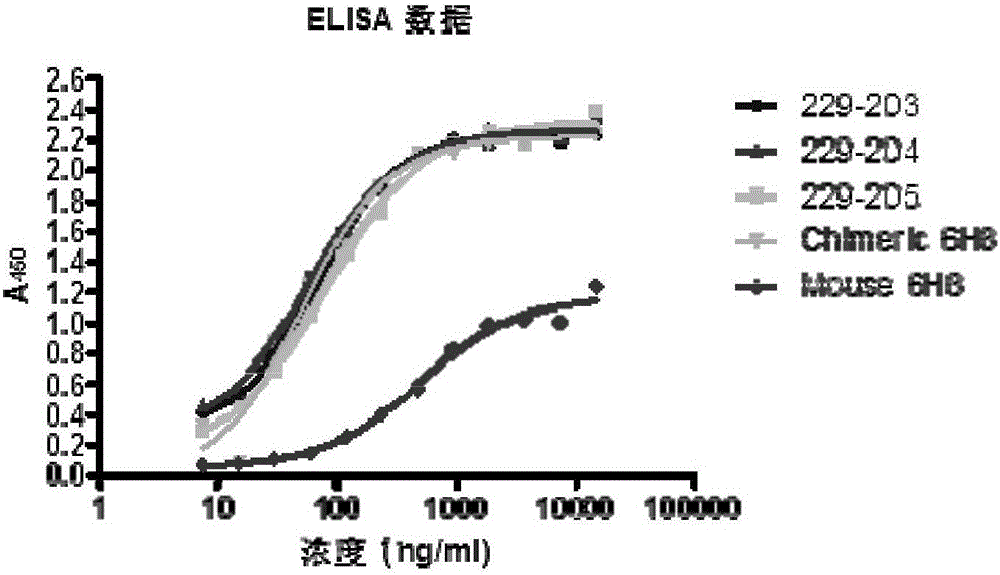Anti-BASIGIN humanized antibody and application thereof
A technology of humanized antibodies and monoclonal antibodies, which is applied in the fields of antibodies, anti-infective drugs, anti-tumor drugs, etc., and can solve problems such as allergic and toxic reactions and blocking antibodies
- Summary
- Abstract
- Description
- Claims
- Application Information
AI Technical Summary
Problems solved by technology
Method used
Image
Examples
Embodiment Construction
[0043] 1. Terminology Explanation:
[0044] Immunoglobulin refers to a class of structurally related glycoproteins consisting of two pairs of polypeptide chains, a pair of low molecular weight light chains (L) and a pair of high molecular weight heavy chains (H), all four chains passing through Disulfide bonds link each other. Each heavy chain typically consists of a heavy chain variable region (abbreviated herein as VH) and a heavy chain constant region (abbreviated herein as CH). Each light chain typically consists of a light chain variable region (abbreviated herein as VL) and a light chain constant region (abbreviated herein as CL). The light chain constant region typically consists of one domain, CL. VH and VL can be further subdivided into hypervariable regions (or hypervariable hypervariable regions in sequence and / or in the form of structurally defined loops), also known as complementarity determining regions (CDRs), interspersed with more conserved region, known as...
PUM
 Login to View More
Login to View More Abstract
Description
Claims
Application Information
 Login to View More
Login to View More - R&D
- Intellectual Property
- Life Sciences
- Materials
- Tech Scout
- Unparalleled Data Quality
- Higher Quality Content
- 60% Fewer Hallucinations
Browse by: Latest US Patents, China's latest patents, Technical Efficacy Thesaurus, Application Domain, Technology Topic, Popular Technical Reports.
© 2025 PatSnap. All rights reserved.Legal|Privacy policy|Modern Slavery Act Transparency Statement|Sitemap|About US| Contact US: help@patsnap.com



